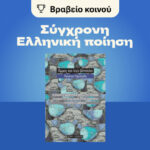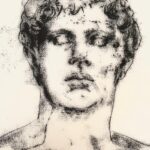Joan Benesh was a ballet dancer who perfected the discipline of choreology, the precise notation of complex dance movements
Joan Benesh, who has died aged 94, was the co-inventor of Britain’s leading system to record ballets as their choreographers created them, and prevent their original versions being dissipated by wilful dancers and inattentive stagings.
As a young ballet dancer and choreographer in 1947, she was labouring to write down in words the steps she wanted to create when she caught the attention of an off-duty accountant, Rudolf Benesh, who was painting portraits of ballet dancers.
He offered to make a system of signs to help her, and between them they hit upon the use of the familiar musical stave of five lines to note precise placing of feet, legs, body, arms and head. With its minimal symbols, this system was capable of such sophistication that even the most convoluted and innovative lifts, holds and formations could be precisely recorded.
The potential of this to record a standard text of ballets, and thus to teach it more quickly to young dancers, was seen by the Royal Ballet’s founding director Dame Ninette de Valois, who ordered that it become part of the academic syllabus for the Royal Ballet School. Not the least of its important features was that it enabled choreographers to hold copyright over their creations and fix a text that could be taught to many companies and many casts without distorting the original intentions.
By 1955 Joan and Rudolf Benesh – they had married in 1949 – were able to make a presentation of a complete notation system to the Royal Opera House, publishing it in 1956; and in 1958 the Benesh movement notation system was included among British government pavilion exhibits of technological and scientific discoveries at the Brussels Universal Exhibition.
The breakthrough, however, came in 1960, when Joan Benesh’s pupil Faith Worth was hired by the Royal Ballet as a full-time notator. Two years later the Royal Ballet’s founder choreographer Sir Frederick Ashton became president of the new Benesh Institute of Choreology, with Joan and Rudolf Benesh as principal and director, to train professional notators for British and Commonwealth ballet companies.
Meanwhile, Ninette de Valois insisted that all students in the Royal Ballet schools should learn to read dance notation. Although her hope that dancers would come to do this as easily as musicians read musical scores has not been fully realised, all works created at the Royal Ballet and Birmingham Royal Ballet have been recorded in the Benesh system, and all productions are staged from them, ensuring that posterity will inherit accurate original texts.
Joan Benesh was born Joan Rothwell on March 24 1920 in Liverpool, and took dance classes at the Studio School of Dance and Drama, later studying with a soloist with Diaghilev’s Ballets Russes, Hilda Munnings, who danced as Lydia Sokolova. She met Rudolf Benesh when she was dancing in the commercial theatre – he was an accountant of Hungarian extraction with a passion for painting and music. A year after their marriage she joined the Royal Opera ballet company, moving to the Sadler’s Wells Royal Ballet in 1951.
Six years later she joined the staff of the Royal Ballet School, refining the notation system and developing the new academic discipline of choreology, defined by Rudolf Benesh as “the aesthetic and scientific study of all forms of human movement by movement notation”: the recording of dance in space.
Attempts to record dance movement had been made since the 17th century, but the requirement to encompass the complexity of human movement alongside its music had resulted in dauntingly specialised symbolic languages, which quickly vanished. The durability of the Benesh system lay in its minimalism and hence its accessibility. It took for granted certain balletic rules, so that its dots and dashes, used in different placings on the stave, could convey a huge amount of information.
While it was Rudolf who devised these marks, it was Joan Benesh who, as a choreographer and dancer, knew exactly what function the marks had to have. It was relatively easily learnt by students, and the leading young Royal Ballet-raised choreographers of the 1960s, including Kenneth MacMillan and John Cranko, soon saw its value in recording their intentions.
Since the 1970s video recording has become a cheap and popular resource for new choreography, but the essential advantage of Benesh notation is seen as its objectivity, the equivalent of the musical score of a composition. All British ballet repertoire – 500 major ballets and another 1,200 teaching scores – is preserved in Benesh in the Royal Academy of Dancing library and the Victoria and Albert Museum, and stagings around the world are made based on these notations to preserve their original intentions. The system has also been adapted for anthropological work on Ugandan dance, and as an aid for physiotherapists working with cerebral palsy.
Rudolf Benesh died in 1975, and a year later Joan Benesh retired. She published their work in Reading Dance: The Birth of Choreology (1977).
In 1986 the Queen Elizabeth II Award, the Royal Academy of Dance’s highest honour, was presented to Joan Benesh for the couple’s work on notation. Their only child, Anthony, survives her.
Joan Benesh, born March 24 1920, died September 27 2014



